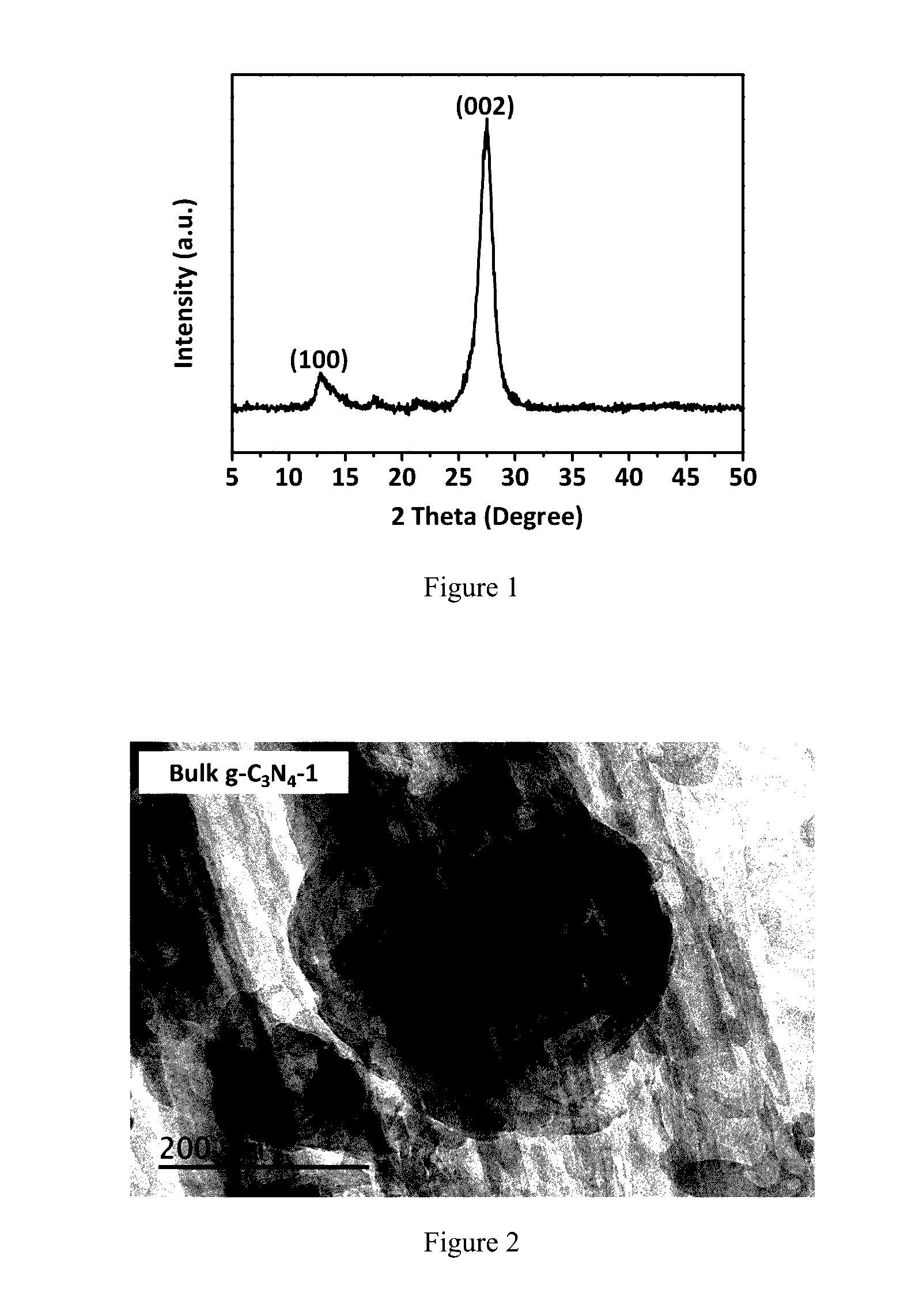Graphitic carbon nitride material, and its synthetic method and applications
a graphitic carbon nitride and nitride technology, applied in the field of graphitic carbon nitride, can solve the problems of posing a great threat to human beings, low photocatalytic efficiency of bulk g-c/sub>n/sub>synthesized by a conventional pyrolytic method, and the impurity of carbon residual in the soft-templating method, etc., to achieve excellent photocatalytic activity ratio ratio
- Summary
- Abstract
- Description
- Claims
- Application Information
AI Technical Summary
Benefits of technology
Problems solved by technology
Method used
Image
Examples
implementation example 1
[0051]A synthetic method of honeycomb-like nanoporous g-C3N4 material includes the following procedures:
[0052](1) Adding 10 g of thiourea, 10 g of NH4Cl and 30 mL of pure water into a beaker (100 mL);
[0053](2) Placing the beaker in a water bath with stirring at 70° C. for 60 min to evaporate most water and to obtain a homogeneous white paste;
[0054](3) Placing the white paste in a vacuum drying oven at 60° C. for 16 hours to completely remove water and to obtain a white solid; and
[0055](4) Putting a crucible with the white solid inside in a muffle furnace, instantly heating the solid to 550° C. with a rate of 15° C. / min and maintaining the temperature at 550° C. for 2 hours. The final product, honeycomb-like nanoporous g-C3N4 material, can be obtained after naturally cooling to ambient temperature.
contrasting example 1
[0056]The bulk g-C3N4 material is prepared by direct heating thiourea without the addition of NH4Cl as a control, which is termed as the bulk g-C3N4-1.
implementation example 2
[0057]A synthetic method of honeycomb-like nanoporous g-C3N4 material includes the following procedures:
[0058](1) Dispersing 10 g of dicyandiamide, 7.5 g of (NH4)2CO3 and 7.5 g of NH4HCO3 in 60 mL of ethanol;
[0059](2) Heating the mixture at 30° C. for 6 hours under stirring to evaporate most ethanol and to obtain a homogeneous white paste;
[0060](3) Placing the white paste in a vacuum freeze dryer at −50° C. for 48 hours to completely remove ethanol and to obtain a white solid; and
[0061](4) Putting a crucible with the white solid inside in a tube furnace, instantly heating the solid to 550° C. with a rate of 1° C. / min under continuous air purging and maintaining the temperature at 550° C. for 4 hours. The final product, honeycomb-like nanoporous g-C3N4 material, can be obtained after naturally cooling to ambient temperature.
PUM
| Property | Measurement | Unit |
|---|---|---|
| time | aaaaa | aaaaa |
| temperature | aaaaa | aaaaa |
| temperature | aaaaa | aaaaa |
Abstract
Description
Claims
Application Information
 Login to View More
Login to View More - R&D
- Intellectual Property
- Life Sciences
- Materials
- Tech Scout
- Unparalleled Data Quality
- Higher Quality Content
- 60% Fewer Hallucinations
Browse by: Latest US Patents, China's latest patents, Technical Efficacy Thesaurus, Application Domain, Technology Topic, Popular Technical Reports.
© 2025 PatSnap. All rights reserved.Legal|Privacy policy|Modern Slavery Act Transparency Statement|Sitemap|About US| Contact US: help@patsnap.com


